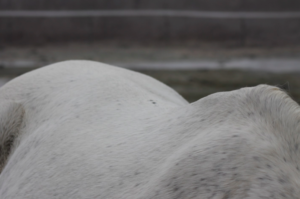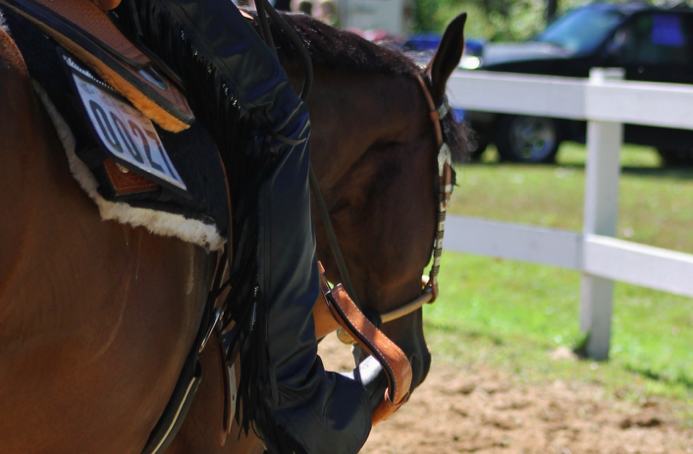By Paige Cerulli, Certified Equine Massage Therapist
We all know that it’s important that your saddle fits your horse well, but have you ever noticed how saddle fit also affects your horse’s posture and ridability? Let’s take a look at a few of the most common issues that arise when you use a poorly fitting saddle on a horse.
Postural Changes In Your Horse
When a saddle fits a horse poorly, the horse may try to compensate for the poor fit or the pain caused by changing his posture. One of the most common issues with poorly fitting saddles is that they often distribute weight unevenly. This can also cause pressure points and significant pain.
The pain of a poorly fitting saddle may cause your horse to hollow his back or to be unable to lift his back. Horses experiencing saddle pain tend to raise their heads high in the air as they are saddled, when the girth is tightened, or when they are ridden. This hollow-backed, high-headed posture can put undue stress on your horse’s hocks and results in a concussive motion because your horse is not able to move with the supple, flexing motion that he normally has. Finally, a poor saddle fit prevents a natural bend in your horse’s side, which can make him awkward or stiff when traveling around corners or in circles.
Ridability Changes In Your Horse

PC: Paige Cerulli
When riding your horse in a poorly fitting saddle, you may notice a significant change in his ride ability. If the saddle is a terrible fit, you may notice these issues almost immediately. In many cases, though, the saddle fits poorly but it takes a few weeks for these issues to emerge (and worsen) as your horse experiences more and more pain.
Horses wearing poorly fitting saddles cannot physically carry themselves in an ideal frame. You may find that your horse is resistant to bit contact and that he carries his head high in attempt to evade the pain in his back.
This makes it difficult to maintain steady rein contact; some horses toss their heads and display other signs of discomfort.
When a horse is in pain, he may become distracted and you may notice that he can’t seem to pay attention to the training session. When the pain
is significant a horse may get reactive, bucking, sucking back, or even refusing to move forward. Some horses may try to bolt forward to escape their pain.
If you have a hard time keeping your horse on the rail or preventing him from falling in on a circle, one of the first things that you should consider is whether his saddle fits correctly. Saddle fit issues don’t always result in significant pain for your horse, in fact a saddle which doesn’t correctly fit your horse’s back may simply sit unevenly. If your horse is attempting to support your uneven weight on his back, it will be difficult for him to balance himself and he may be resistant to traveling on a circle.
Identifying Saddle Fit Issues
If you suspect that your horse’s saddle doesn’t fit correctly, check his back for signs of pain or sensitivity. Saddle fitting requires such precision that it’s best to have a professional assess the fit of your tack; many vets and chiropractors offer this service, as do professional saddle fitters.
Alleviating Saddle Fit Issues
When you know that you have a saddle fit issue at hand, chances are it may be time to buy a new saddle. Some more minor fit areas can be temporarily corrected by the use of a shimmable correction saddle pad. If your horse has been wearing a poorly fitting saddle for a while, he may need chiropractic and massage work to help relieve the pain that the saddle has caused.
It you need to find a better fitting saddle for your horse, then it’s best to have a professional saddle fitter out to your back to assess which saddles may be best for your horse. He’ll be able to perform better and more comfortably as a result.

PC: Paige Cerulli

